Table of Contents
- Massive campaigns (1001–5000 emails) received less than 3.5 links per campaign—70% fewer than 51-100 spots.
- Only 1 in 3 emails in digital PR gets opened — the average open rate was 33.79%.
- Open rates dropped from 35.42% (1–50 emails) to 29.76% (1001–5000 emails) — a 16% decline.
- Reply rates fell from 1.15% (1–50 emails) to 0.37% (1001–5000) — a 68% drop.
- Campaigns using just one email template got the highest reply rate at 1.28%.
- Campaigns sending 51–100 emails seem to be the sweet spot for earning links, with an average of 12.08 links.
Recently, I’ve heard a prominent digital PR team saying they send over 5K emails per campaign to get great results.
Digital PR campaigns are rarely relevant to thousands of journalists, so this number gave me pause.
The industry calls this the “spray and pray” technique. If you send out enough emails that you find on a media database, you are bound to reach some interested people, right?
Maybe not.
We evaluated over 31 million emails and 86 thousand campaigns from BuzzStream to determine the effectiveness of large-scale email campaigns. (See the methodology.)
Spoiler alert: Massive campaigns of 1000 emails+ score 70% fewer pieces of coverage than lower volume campaigns (51-100 emails).
Open Rates vs Number of Emails Sent
First, I wanted to start with open rates.
Although open rates are noisy metrics (more on that next), they are still an industry standard for many reports.
We found that the smaller the volume, the better the open rate.
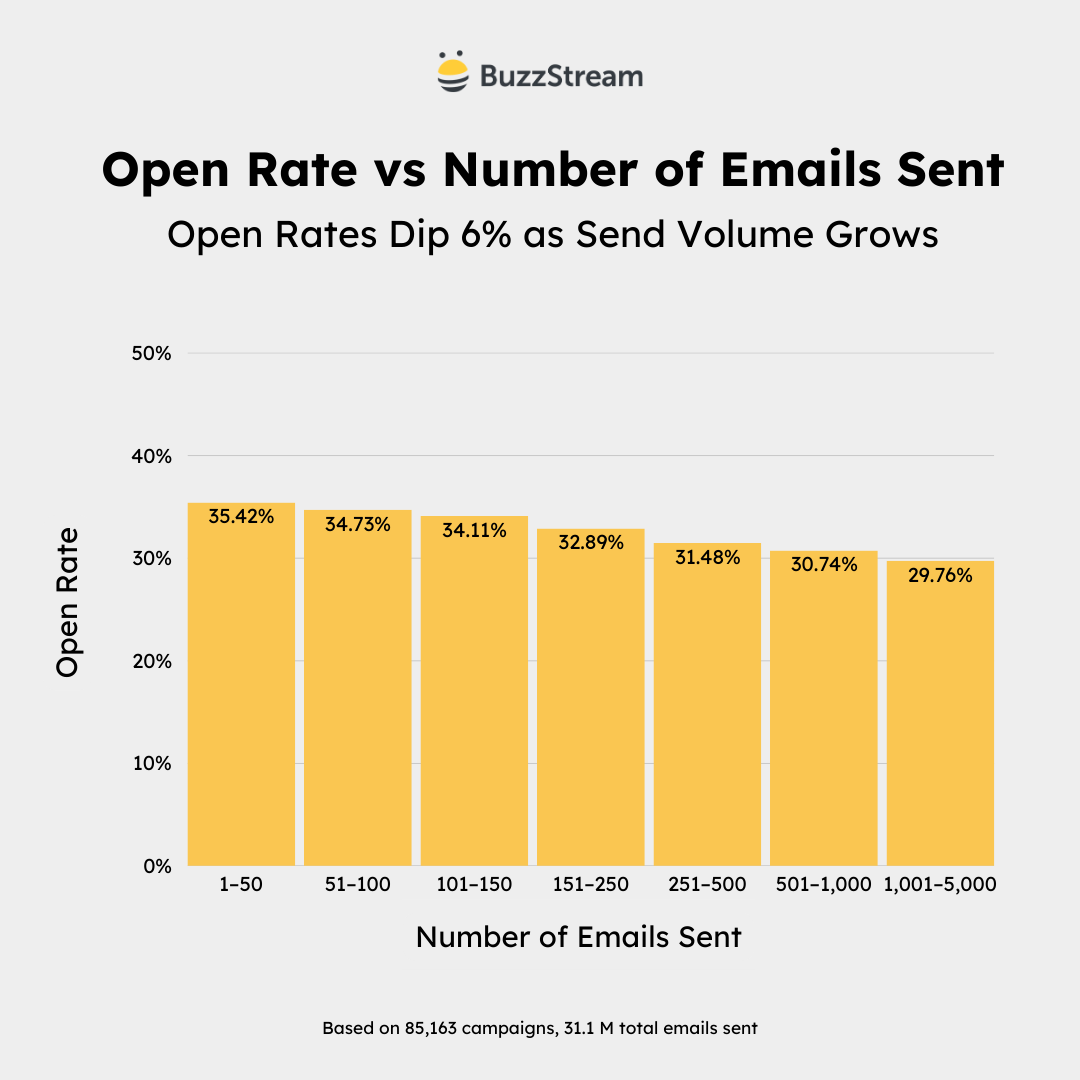
Our average open rate across the study shows that only about one in three emails gets opened.
But, we are seeing the first signs of scale impact effectiveness.
Open rates dropped about 6% as campaign size increased to large and massive sizes.
As I mentioned, however, open rates can be somewhat noisy due to the way Apple and Google inflate email opens.
That said, our study examines millions of emails. Any random noise (from Apple auto-opens or Gmail caching) tends to average out across millions of data points.
Next, I want to dig into another metric more indicative of success: reply rate.
Reply Rate vs Number of Emails Sent
Although the average reply rate is initially low (0.85%), the smaller-volume outreach is more than three times more effective than the large-volume and massive outreach buckets.
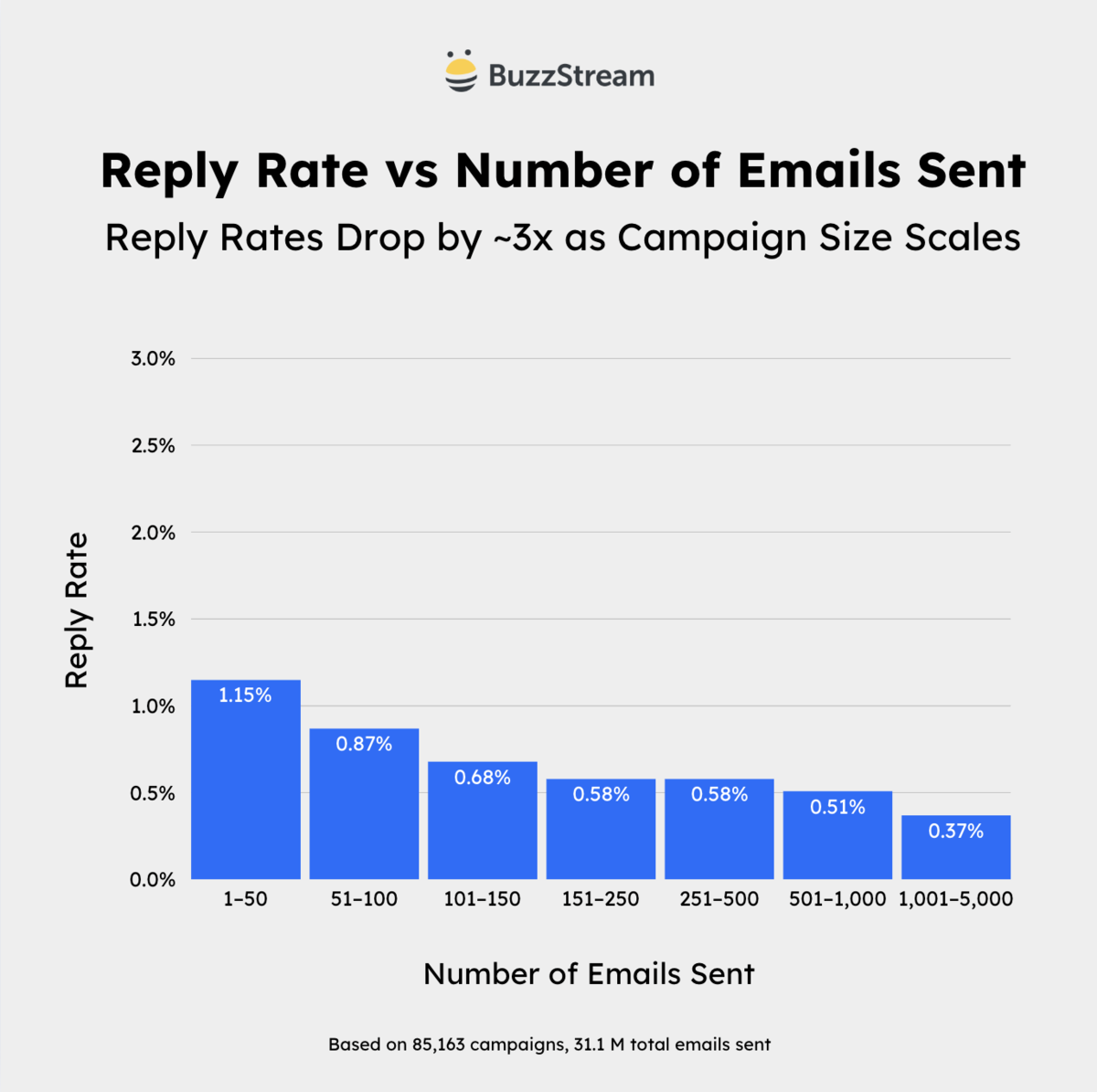
Why Are Reply Rates So Low?
If reply rates meant coverage rates, we’d be out of business.
Having a response rate of zero doesn’t mean a pitch has failed. You might end up getting coverage even if a journalist hasn’t responded.
According to Muck Rack’s State of Journalism report, 49% of the time, journalists seldom or never respond to pitches.
So, in our study, we can use reply rates as a directional signal. Again, lower email volumes correlate with better reply rates.
But I can still dig deeper.
Next, we’ll see if this pattern holds up at the template or sequence level.
Reply Rate at the Template/Sequence Level
A single campaign may use multiple templates within a sequence. Templates that include automated follow-ups are called sequences.
Single campaigns may use multiple templates for different pitch angles, others A/B test similar templates, and some do both.
For example, this campaign for my State of Digital PR study had a single template, with 25 emails sent total:

This VR fitness campaign A/B tested two similar templates within one campaign, with 141 emails sent in total:
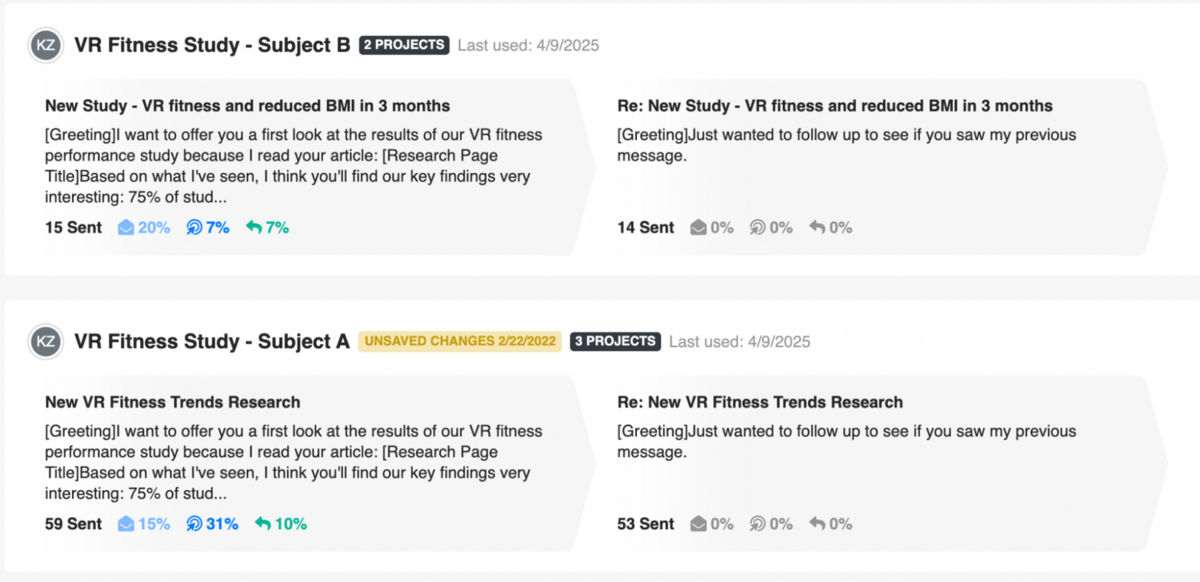
Let’s look at the open rate and reply rates based on the number of emails sent.
Again, we see that, on average, fewer emails sent appear to have a higher open rate.
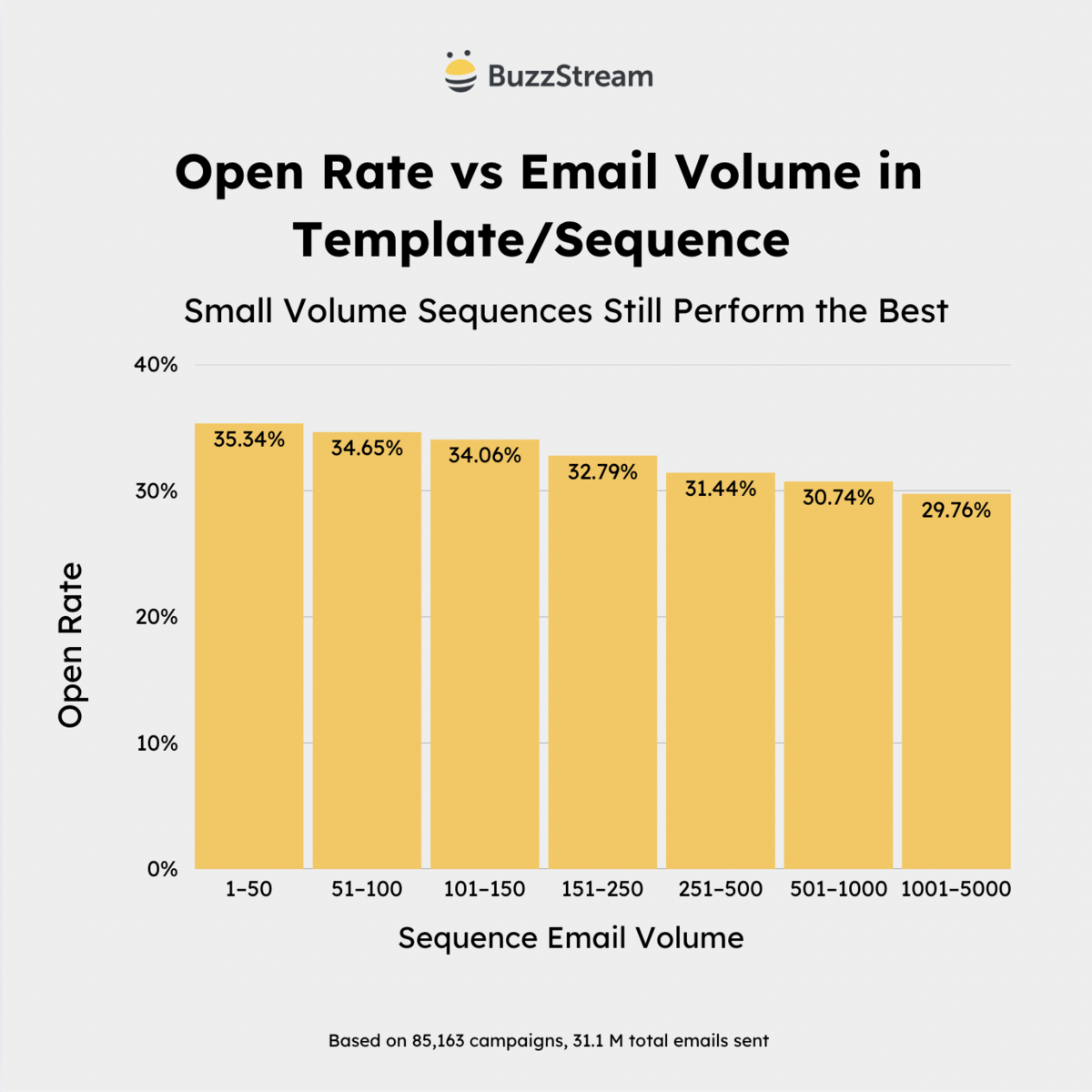
This holds for reply rates as well:
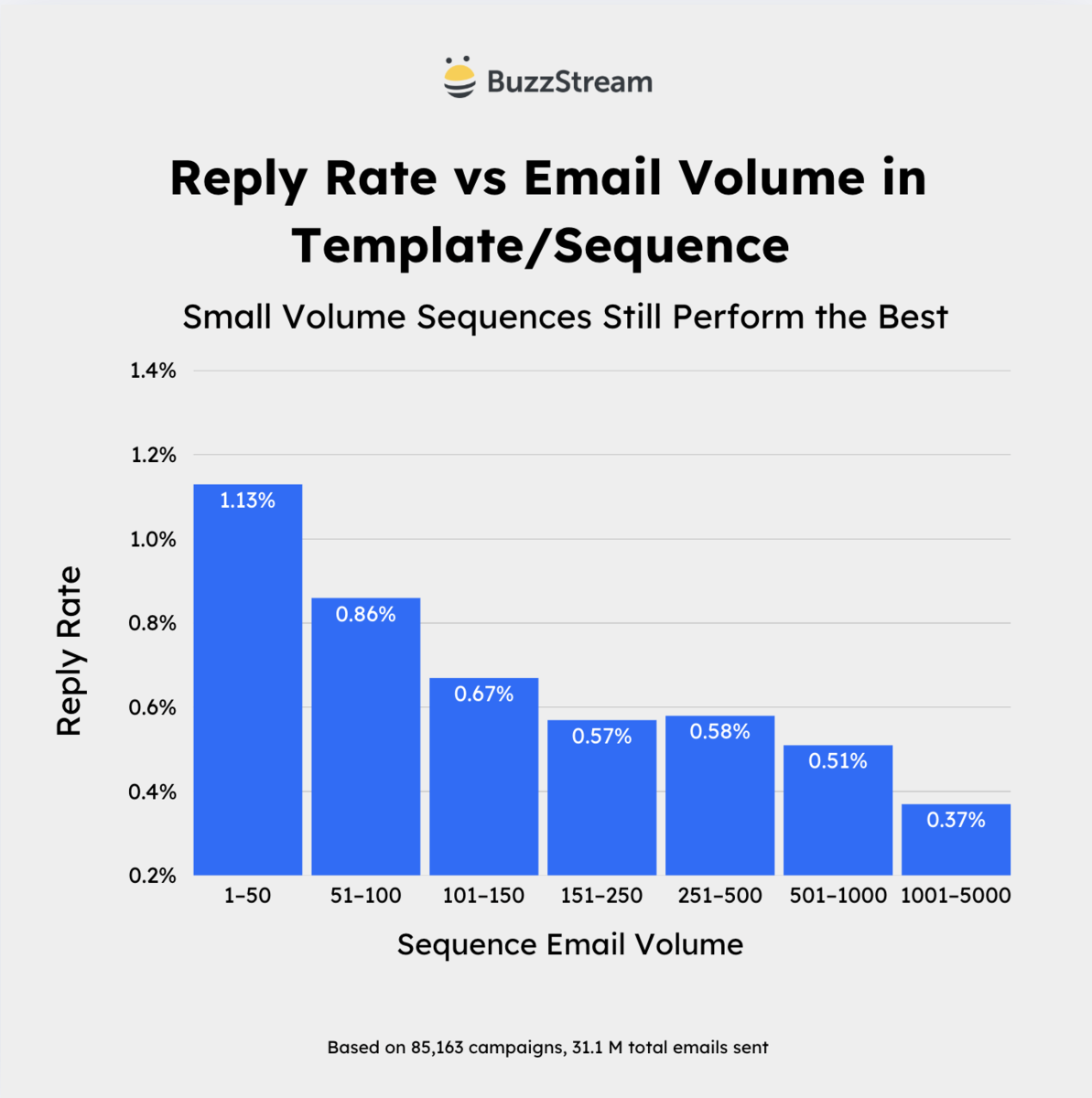
Analyzing these campaigns’ performance is the only thing left at this point.
Number of Emails Sent vs Links
I used Ahrefs’ Batch Analysis tool to get the average number of referring domains that each URL within each email pitched from our dataset.
As you can see, the trend still shows that more links correlate with sending fewer emails.
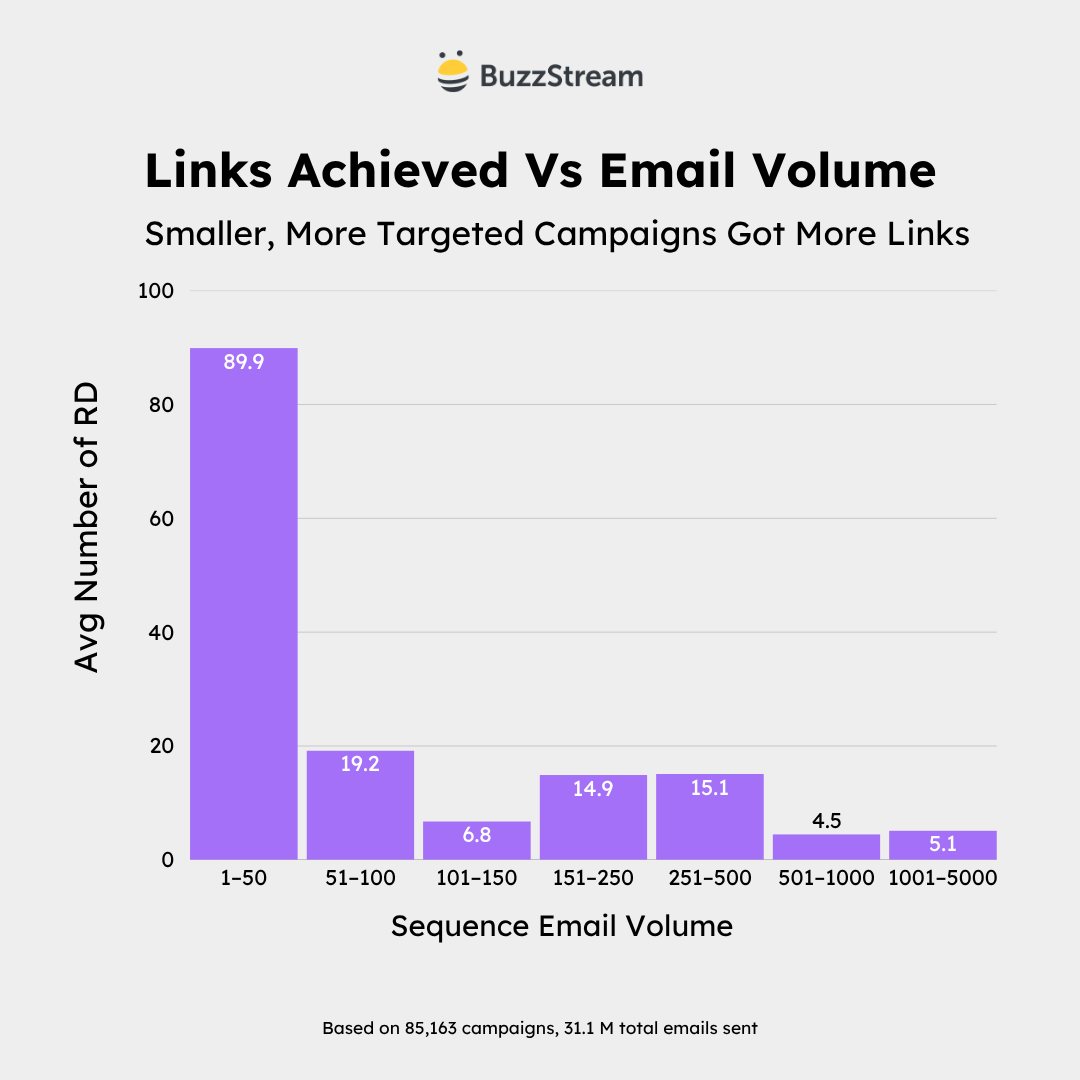
There are lots of limits to this data, however:
- Not all of the RD numbers listed are attributable to the emails sent through this campaign
- Some campaigns get unlinked mentions, which aren’t reflected in this analysis
Most importantly, this is all correlative.
If we take this information at face value, you’d think that all you have to do is send fewer emails and get a better response rate from journalists!
Easy, right?
Unfortunately, there are a few reasons that’s not the case.
What Does This All Mean?
Having a large (or small) number of journalists doesn’t indicate the quality of your journalist outreach list, which is what this all comes down to.
A small list of irrelevant journalists can still get you a zero response rate.
The real magic that happens behind the scenes in these top agencies is the targeting.
According to our State of Digital PR report, finding relevant journalists has become harder in the past 12 months. This is likely due to media databases with outdated or incorrect information (61% of respondents agreed) and massive journalist layoffs.
This is an area we’ve thought about a lot at BuzzStream. For instance, we have a few posts about building targeted media lists (without a costly database tool).
But to help PRs solve this problem, we’ve developed a new tool called ListIQ, a Chrome Extension that enables you to build highly relevant media lists.
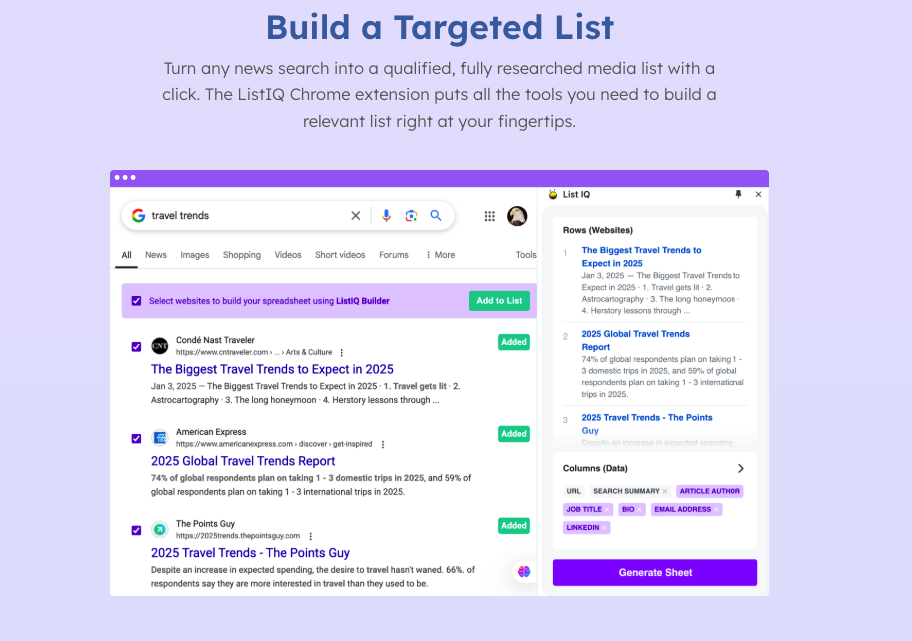
If you’re interested in learning more about it, sign up today.
Methodology
First, a few notes on how I sliced the data to drill down into digital PR campaigns:
- Emails must be longer than 50 words. This avoids quick follow-up emails that may not be pitches.
- Excluded auto-replies and bounced emails. We wanted to focus on emails that journalists receive and have a chance to open.
- The maximum amount of sends is 5000. After 5000+, the data starts to get very thin.
- Focused on agencies that use BuzzStream mainly for digital PR.

 End-to-end outreach workflow
End-to-end outreach workflow



 Check out the BuzzStream Podcast
Check out the BuzzStream Podcast







